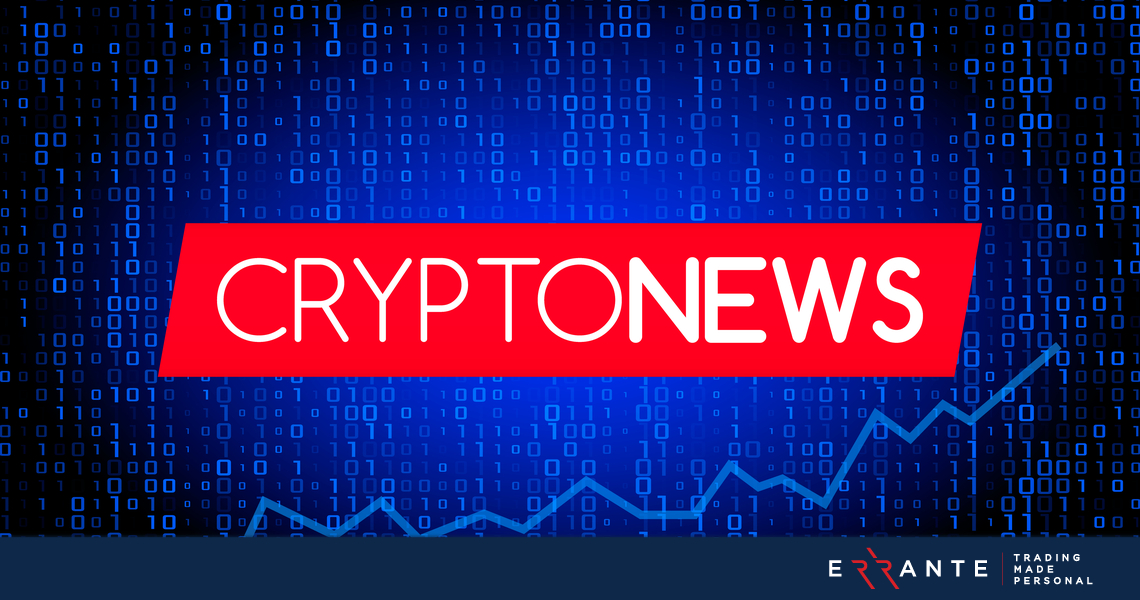Breaking copyright News: What's Taking place in the Digital Money Globe
Breaking copyright News: What's Taking place in the Digital Money Globe
Blog Article
Discovering the Effect of Governing Changes and Technical Advancements on Today's Digital Currencies Headlines
The crossway of regulative adjustments and technological technologies is essentially modifying the landscape of electronic currencies, prompting a re-evaluation of their function in the international economic climate. Regulative bodies, such as the SEC and CFTC, are actively influencing how digital assets are classified, while new innovations are enhancing purchase effectiveness and safety and security procedures. This dual evolution increases vital questions about the ramifications for market characteristics and investor self-confidence. As we explore these advancements, the question stays: just how will these aspects form the future trajectory of digital currencies in a progressively interconnected world?
Current Regulatory Landscape
In the wake of fast innovations in digital currencies, the present regulative landscape is evolving to attend to the intricacies and challenges postured by these technologies. Federal governments and governing bodies globally are grappling with exactly how to efficiently supervise this expanding market, which usually transcends national limits.
Secret governing approaches include the establishment of structures that define electronic currencies, guaranteeing customer security and protecting against illegal activities such as money laundering and scams. In the United States, firms like the Securities and Exchange Compensation (SEC) and the Product Futures Trading Payment (CFTC) are proactively participating in discussions to clear up the category of various digital assets and their regulative effects.
Similarly, the European Union is progressing its Markets in copyright-Assets (MiCA) regulation, which aims to create a natural regulative setting across participant states. Nations like China have actually chosen more stringent actions, including straight-out restrictions on specific copyright tasks.
As this governing landscape continues to establish, it will be important for stakeholders, including companies and customers, to stay enlightened and adapt to the transforming atmosphere to alleviate risks while exploiting on possibilities within the digital money round.
Key Technological Innovations
Countless technological developments are improving the landscape of electronic money, dramatically enhancing their capability and safety. Among one of the most crucial developments is the growth of blockchain innovation, which offers a decentralized journal that makes sure transparency and immutability of transactions. copyright news. This modern technology not just minimizes the risk of fraudulence but likewise enables real-time deal confirmation, promoting individual trust fund
Furthermore, the emergence of smart agreements has actually reinvented exactly how agreements are implemented within digital money environments. These self-executing contracts help with automated purchases, getting rid of intermediaries and decreasing expenses connected with typical contract enforcement. Advancements in cryptographic techniques boost the safety and security of digital wallets, protecting users' properties from possible cyber threats.
An additional notable advancement is the combination of artificial intelligence in purchase tracking and fraudulence detection, enabling platforms to recognize dubious activities quickly. The intro of Layer 2 scaling services, such as the Lightning Network, addresses scalability issues, permitting for faster and more affordable deals on networks like Bitcoin.

Effect on Market Characteristics
Technical innovations in digital currencies have not just boosted capability and safety and security however have additionally significantly altered market dynamics. The introduction of blockchain innovation has actually boosted openness and reduced transaction costs, resulting in higher performance in trading and investment. This has actually motivated an extra varied series of participants, from retail financiers to institutional gamers, to involve with digital money, thus intensifying market liquidity.
In addition, the introduction of decentralized finance (DeFi) systems has actually disrupted typical monetary systems, offering customers with alternate avenues for loaning, borrowing, and trading. This shift has actually fostered an affordable atmosphere where conventional banks are compelled to innovate or take the chance of obsolescence (copyright news). With the surge of stablecoins, which supply rate stability amidst volatility, investors can now perform transactions with reduced threat, additional influencing market behavior
In addition, the assimilation of expert system and artificial intelligence in trading techniques enables much more sophisticated market evaluation and anticipating modeling. Therefore, capitalists are much better outfitted to react to market changes, developing a more dynamic trading atmosphere. Jointly, these innovations are reshaping the landscape of digital money, causing an extra interconnected, affordable, and reliable market.

International Point Of Views on Law
Governing methods to digital money differ dramatically across the world, commonly mirroring differing economic top priorities, cultural mindsets towards development, and levels of technical fostering. In the USA, governing bodies such as the SEC and CFTC grapple with defining the legal status of cryptocurrencies, concentrating on financier security and market honesty. At the same time, the European Union is advancing detailed regulative frameworks like the marketplaces in copyright-Assets (MiCA) proposal, aiming to develop a unified strategy that promotes technology while making sure customer safety and security.
In comparison, nations like China have actually adopted a straight-out ban on cryptocurrencies, prioritizing financial control and monetary security over advancement. On the other hand, countries such as El Salvador have actually embraced Bitcoin as lawful tender, showcasing a strong commitment to economic incorporation and financial modernization.
Developing countries frequently find themselves navigating an intricate landscape, stabilizing the need for law with the prospective benefits of digital currencies in driving economic growth. Overall, the worldwide regulatory setting continues to be fragmented, with continuous dialogues and changes as governments seek to strike an equilibrium between fostering development and mitigating dangers related to digital currencies. This vibrant landscape useful content highlights the requirement for recurring worldwide cooperation and discussion among regulatory authorities.
Future Fads in Digital Currencies
As regulatory structures advance, the landscape of digital currencies is positioned for significant improvement. Arising trends suggest a merging of regulatory quality and technological advancement, which visit here will certainly shape the future of electronic currencies. Central Financial Institution Digital Currencies (CBDCs) are expected to obtain grip as federal governments discover their potential to boost monetary plan efficiency and economic incorporation.
Concurrently, decentralized money (DeFi) platforms are anticipated to test conventional financial systems, offering cutting-edge economic solutions that operate without intermediaries. This change could result in a re-evaluation of existing guidelines to fit the one-of-a-kind features of DeFi while ensuring consumer protection and systemic stability.
Furthermore, the combination of expert system and equipment learning in copyright trading and risk evaluation will redefine investment techniques and market characteristics. As electronic money come to be significantly mainstream, problems such as cybersecurity dangers and governing conformity will demand durable solutions.
Finally, public understanding and adoption will play an important duty in figuring out the trajectory of electronic money. Enhanced awareness and education concerning the benefits and dangers connected with electronic currencies will certainly drive acceptance, eventually influencing the regulative landscape and market developments in the years ahead.
Conclusion

Report this page